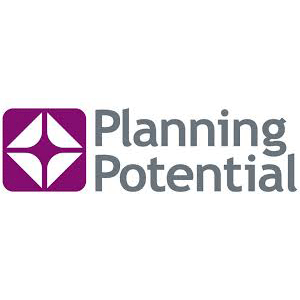We are professional drainage design consultants designing foul and surface water drainage systems
Drainage Design Consultants
Drainage challenges like seeping water or moulding can make your daily life quite problematic, and having an expert drainage solution for residential and commercial businesses can help you come out of this situation. RIDA Drainage Consultancy specialises in crafting practical and efficient drainage designs to address your unique needs.
The Combined 37 years of brief experience of our drainage design consultants in the drainage sector speaks for itself. We keep efficiency and cost effectiveness hand in hand.
Try us now and know for yourself what sets us apart from others!
How does an Effective drainage design help?
Effective drainage design is crucial for various reasons, playing a vital role in managing water flow and preventing water-related issues.
Here are key points highlighting the importance of effective drainage design:
Flood Prevention
Proper drainage systems prevent water accumulation, reducing the risk of flooding. Well-designed drainage channels and structures direct excess water away from pone areas.
Soil Stability
If your drainage system is efficient, then it will prevent soil erosion by maintaining a balanced moisture level. This stability is essential for supporting structures and preventing landslides.
Infrastructure Protection
Effective drainage protects infrastructure such as roads, buildings, and bridges from water damage. It preserves the integrity of these structures by minimising water-related deterioration.
Agricultural Productivity
In agriculture, drainage systems improve soil conditions by preventing waterlogging, which can negatively impact crop yields. Well-drained soils enhance root development and nutrient uptake by plants. Subsurface drainage systems, like tile drains, can be designed to manage groundwater levels in agricultural fields, optimising growing conditions.
Water Quality Management
Drainage designs can incorporate features like sedimentation basins and filtration systems to improve water quality. This is particularly important in urban areas where stormwater runoff can carry pollutants into rivers and streams. Sustainable drainage systems (SuDS) focus on minimising the impact of urban development on water quality by promoting natural infiltration and storage of rainwater.
Groundwater Protection
Proper drainage prevents the accumulation of water around foundations, safeguarding against water infiltration and protecting groundwater quality.
Safety
Effective drainage design contributes to public safety by minimising the risk of accidents and property damage associated with water-related disasters. Properly designed drainage systems help avoid hazardous conditions on roads and walkways during heavy rainfall.
Public Health
By reducing standing water, drainage systems help control the breeding of disease-carrying insects like mosquitoes, thus minimising the risk of waterborne diseases.
Fundamental Principles and Factors in Drainage Design
Hydrological Analysis
A thorough understanding of the local hydrological cycle is fundamental. This involves assessing rainfall patterns, runoff rates, and the overall water balance in the area.
Topographical Considerations
The natural landscape, including slopes, land contours, and surface features, must be analysed to determine optimal drainage solutions.
Software-Driven Efficient System
Balancing effectiveness with cost considerations is crucial. Our chartered engineers aim to design drainage systems by using Causeway FLOW software, which guarantees efficiency and cost-effectiveness. It simplifies tasks like foul drainage, urban runoff reduction, stormwater management, and suds design with the help of strong algorithms.
Land Use Planning
Different land uses impact drainage requirements. Urban areas with impervious surfaces necessitate efficient drainage systems to manage increased runoff.
Soil Characteristics Analysis
Soil permeability and composition influence water absorption and runoff. Drainage design consultants consider soil types to design appropriate drainage systems suitable to local soil conditions.
Climate Assessment
Regional climate conditions, including temperature and precipitation patterns, are important. Climate data informs the design of drainage systems capable of handling various weather scenarios.
Regulatory Compliance
Adherence to local regulations and standards is crucial for ensuring the safety and environmental sustainability of drainage systems. We draw drainage systems aligned with Sewer Water companies and local building regulations and Lead Local Flood Authorities. Our use of advanced technology ensures accurate, comprehensive plans, instilling confidence in our services.
Sustainability Integration
Modern drainage design emphasises sustainable practices. With a dedicated team of skilled engineers, we specialise in innovative and sustainable SuDS design for residential, commercial, and industrial projects. Our collaborative approach ensures designs align with client goals.
Comprehensive collaboration
In partnership with planners and landscape architects, our drainage design consultants craft designs aligning with the developer and local authority needs. Our approach prioritises climate resilience, providing clear, cost-effective guidance that complies with planning policies, fostering sustainable development while enhancing your project's viability.
Trusted by over 100 developers, architects and planners in the UK to get their planning approvals
Benefits of choosing our drainage design consultancy
Our design provides:
Drawing detailed drainage systems in line with Sewer Water companies, Local building regulations and Lead Local Flood Authorities.
We use up-to-date technology to ensure that plans are accurate and comprehensive, allowing you to have full confidence in our services.
Our designs prioritise cost savings ensuring it meets current and future needs.
With years of experience, our drainage design guarantees safe and reliable results that keep you within the parameters of all regulatory standards.
Our drainage consultants can provide a detailed analysis of your current system's structure and performance, providing you with the information necessary to make an informed decision.
We will ensure that your drainage system is properly designed throughout the entire construction process.
What does our drainage design consist of?
Our drainage design is from feasibility to detailed construction drawings or Stage 5 RIBA. We produce
Pipe sizes
Pipe bedding
Distribution chambers
Setting out points for swales
3D models for ponds.
In certain situations, the local council may ask that all levels, sizes, and design details be designed to RIBA stage 4 before approval. Having a reliable and efficient drainage system in place can ensure that your obtains planning approval.
Frequently Asked Questions
What software do we use for your drainage design?
We have software that helps us to create efficient and cost-effective solutions for surface or foul water drainage systems. We use our expertise in hydraulic modelling to determine the most cost-efficient drainage design.
We use Causeway FLOW software for designing your drainage system. FLOW provides efficient and cost-effective solutions that streamline drain project operations.
Through Causeway FLOW's powerful algorithms, our engineers and designers can quickly generate reliable designs from complex data sets.
This software supports various project types, including stormwater management, urban runoff control, foul drainage design, and suds design.
When designing a drainage system, the right software is essential to ensure that you create an efficient and cost-effective system in compliance with building regulations for drainage.
What are the signs of poor drainage?
Poor drainage in home landscaping can lead to a variety of problems. Warning signs may include
Flooded driveways after rain
Water pooling around the foundation
Standing water that won't drain
Wet soil in garden beds
Moulding on walls or surfaces
Water seeping into your basement
If you notice any of these signs in your garden, it's time to take action.
What are the causes of poor drainage systems, and how to prevent them?
Homeowners often encounter drainage issues, from minor clogs and sluggish sinks to major problems like flooding or overflowing sewers. Common drainage problems include:
Clogged Drains
Clogged pipes can be a nuisance, but the good news is that this common problem is easily preventable! By avoiding putting hair, grease and food down drains, you'll help to keep your piping system running smoothly.
Broken or Deteriorated Pipes
As pipes age, they become more prone to corrosion and wear and tear. If left unchecked, these weakened parts can lead to costly leaks that need urgent fixing to avoid further damage.
Blocked Sewers
Sewer line blockage can happen suddenly and unexpectedly, caused by tree roots and debris clogging the pipes. This creates a major problem requiring professional attention to restore water flow without flooding or overflowing.
Sagging Sewer Lines
Sewer line issues can appear in more ways than one – if the ground starts to sink or shift, it could cause a pipe to sag and lead to potential flooding.
If you're seeing any signs of clogged or slow-working drains in your household, it's best to get professional counsel immediately. Take action quickly and avoid costly repairs!
How to design a drainage system?
An effective drainage system is crucial to protecting your home and landscape from damage caused by excess water. Here are the steps we will use while designing a drainage system that ensures optimal results:
Step 1: Determine how much water needs to be drained away from your property
Consider how much water will runoff due to precipitation or how much foul water is produced by your development.
Step 2: Estimate the amount of slope needed for efficient drainage away from your home and landscape
In this step, we will determine how much difference in elevation there needs to be between areas where water is being diverted and how much gradient is needed on slopes to direct water away.
Step 3: Consider how you will be directing water away from your property
This step could involve excavating a ditch, installing underground pipework, or using swales (shallow depressions in the ground) to contain and direct runoff.
Step 4: Survey the area to determine how much space is available for drainage systems and how much construction may be necessary
Check for any underground utility lines or structures that may be in the way of your drainage system.
Step 5: Determine how you will control water flow and where the runoff should be directed at the end of the drainage system
This could involve using drains, ditches, or other water-control structures to manage how much water is entering and how quickly it is exiting the system.
It is essential to remain mindful of local regulations when designing a drainage system. Taking the necessary steps to abide by applicable laws will strive for everyone's safety while preventing potential problems from arising due to water damage.
It is wise to consult experts to design a drainage system to keep your home safe from water damage and safeguard your landscape. Professionals can provide solutions that ensure maximum protection against future spills or floods.
How to design a foul drainage system?
Designing a foul drainage system is an intricate process. It's essential to consider the size of your property, soil type, and local regulations to come up with the right design solution. Various methods are used in the design process, such as the Discharge Unit method, based on probability theory, to estimate maximum peak flows from appliances. Additionally, the software can confirm continuity between the drainage network, foul network, and road network.
Constructing a safe and eco-friendly environment starts with proper foul drainage design. This foul drainage design guide provides help in safely collecting and managing wastewater as well as rainwater to avoid any flooding or environmental harm.
If you plan to discharge to the Public Sewer. Then you can use 4000 lt per day per property to calculate the pipe flows and velocity. This is explained in Sewers for Adoption. If you are looking at discharging into a treatment plant, then you can use the 150 lt/person/day. This is explained clearly in the Code of Practice Flows and Loads.
The pipe slope on the foul water is 1 in 40 for lateral connections, 1 in 60 if there is a WC and 1 in 80 if there are at least 3 WCs connected to the pipework.
How to design a stormwater drainage system?
The SuDS design can be complex, but there are several steps you should take to ensure your project is successful:
Determine the system's purpose
To create an efficient stormwater drainage system, it's important first to identify the purpose for its installation. Considerations must be made regarding how much runoff it should cover and any additional objectives that need to be fulfilled.
Collect information and data
In the second step, we have to collect detailed information about our local environment to get the best results. From surface slopes to rainfall patterns - no stone will be left unturned in designing a perfect drainage system.
Design the stormwater drainage system
Once all the necessary information has been collected, it's time to design the system. This includes planning where drains and pipes should be placed and calculating how much capacity they will need to handle expected flows. For a surface water drainage system using the guidance provided in the SuDS Manual, usually, if you allow for 50mm/hr should be sufficient to give you an indication of the amount of water.
You also need to check if the site surfers from surface water flooding. Surface Water flooding needs to be incorporated within your design. You can check this by completing a flood risk assessment.
The minimum slope is 1 in 100 for a 110mm pipe, 1 in 200 for a 225/200mm pipe. Usually, a 100mm pipe diameter carries the flow of 80 square metres up to a storm of 1 in 100 +40 % climate change.
Why is stormwater drainage design important?
Stormwater drainage design protects property from flooding, erosion, and pollutants. By strategically collecting runoff to prevent damage or contamination near populated areas, the risks of floods can be significantly minimised - helping preserve lives and valuable assets.
Effective drainage design is key in protecting our ecosystems by preventing water pollution caused by runoff from roads and construction sites. This land drainage design guide can help restore natural habitats and preserve biodiversity by better managing an area's stormwater runoff. The introduction of SuDS mandatory in England supports this.
Which pipe is best for underground drainage at home?
All projects demand something different when it comes to underground drainage in a home. Factors like nature, size and location of the drain dictate which type of pipe will be best suited for your needs – so consider them carefully before you start!
PVC or U-PVC pipes are a great option for indoor drains. They have an economical price and provide quick and easy installation – making them the perfect solution for your next interior drain project.
Cast iron is a popular choice for drainage underground, as it provides lasting durability and protection from corrosion.
With various options available, selecting the right pipe for your project can be overwhelming. Careful consideration must be given to cost and performance characteristics when making this important decision - ensuring that you choose the best-suited pipe for your installation!
What is a good drainage rate?
A properly functioning drainage system is key for successful land management, as too much or too little water can have serious consequences—from soil erosion to flooding. Finding the right balance between speed and safety of draining water helps ensure your project's long-term success.
For example, Irrigation design is a balance between providing suitable moisture levels for agricultural use and avoiding flooding or pooling. Slow drainage rates are beneficial in those cases, whereas faster ones can help reduce soil water-logging in gardens and lawns that require less hydration.
Proper drainage is essential for optimal landscaping, and the draining rate can vary depending on the application. Too little or too much water logging can cause undue stress, so selecting a suitable drainage solution to meet your needs is important! If you’re unsure which option will work best for you, give us a call, and we’ll help you in no time!
Get in touch with us
Call Arge on 01608 510 121 or e-mail him at arge@rida-reports.co.uk
BEng(Hons) MSC CEng MICE MCIWEM C.WEM CEnv













